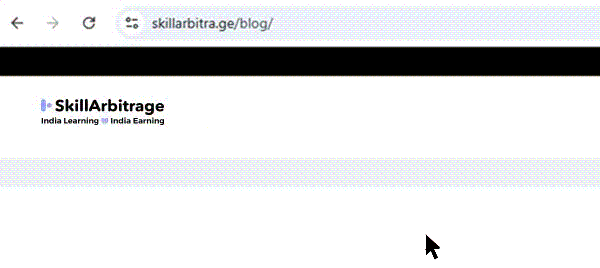Whether you’re looking to repurpose and produce ten or more high-quality pieces of content in just a few hours or build a streamlined system that multiplies your reach effortlessly, you’ll find the tools, tactics, and inspiration you need right here.
Table of Contents
Introduction
You know the saddest part about being a content writer?
The popularity of your unique creation is just so short-lived.
You break your back over building something, and then it has had its moment of glory, and you are off to create new content.
But each piece of content we commercially write also has a business purpose apart from the emotional agony.
But can we ensure that each piece of content gets fully utilized?
Here’s a painful truth most content creators won’t admit: you’re probably wasting 90% of your content’s potential.
You spend hours crafting that perfect blog post, hit publish, share it once on social media, and then… nothing. It sits there collecting digital dust while you’re already grinding away on your next piece.
But what if I told you that a single blog post could fuel your content strategy for weeks? That one well-written piece could become a LinkedIn post that drives engagement, a Twitter thread that goes viral, an Instagram carousel that builds your brand, a newsletter that converts subscribers, and a video script that showcases your expertise, all without starting from scratch.
The problem isn’t that you don’t know repurposing works.
Deep down, every marketer and content creator knows they should be doing it. The problem is that manual repurposing feels like a massive time sink.
By the time you’ve adapted one blog post for three different platforms, you could have written two new posts instead. Or at least, that’s what it used to feel like.
AI has completely changed this game. With the right workflow and prompts, you can transform one comprehensive blog post into 10+ strategic content assets in under two hours.
We are not talking about lazy copy-paste jobs that scream “repurposed content.”
We are talking about strategic, platform-specific adaptations that feel native to each channel and serve your audience exactly how they want to consume content.
Ready to turn your blog into a multi-platform content engine? Let’s dive into a step-by-step workflow that will save you time, boost your consistency, and expand your reach with minimal effort.
Why repurposing content wins
Let’s start with the most obvious reason.
Your audience doesn’t live on just one platform. Some people love reading long-form blog posts with their morning coffee.
Others prefer quick LinkedIn updates during lunch breaks. Your video-first audience wants to see you explain concepts on camera, while your newsletter subscribers enjoy getting curated insights delivered to their inbox.
When you only publish content in one format, you’re essentially ignoring 80% of your potential audience.
But here’s what most creators miss: it’s not just about reaching more people, it’s about reaching the same people in different contexts and mindsets.
Think about your content consumption habits.
Maybe you save in-depth articles for weekend reading but scroll through social media during work breaks. Your audience does the same thing.
They might see your Instagram post during their commute, remember your brand, and then seek out your newsletter when they’re ready for deeper insights.
Strategic repurposing also reinforces your core messages. Marketing psychology tells us that people need to encounter an idea multiple times before it really sticks.
When someone sees your key insight as a tweet, then encounters it again in your newsletter, and finally watches you explain it in a video, that’s when real learning and behavior change happen.
The contrast between manual and AI-powered repurposing is vivid.
Manual repurposing is slow, inconsistent, and frankly, boring. You’re essentially doing the same creative work over and over again.
AI-powered repurposing is fast, scalable, and actually strategic. It helps you think about how to adapt your message for different platforms and audiences, not just copy and paste it.
Here’s the kicker: one well-researched, comprehensive blog post contains enough insights, quotes, examples, and actionable tips to fuel weeks of multi-channel content. The key is knowing how to extract and transform those elements strategically.
Your AI repurposing toolkit
Before we dive into the workflow, let’s talk tools. The good news is you don’t need a massive tech stack to get started.
In fact, starting simple is usually better; it helps you build the habit without getting overwhelmed by tool management.
Your core toolkit should include ChatGPT and Claude.
ChatGPT excels at rapid content generation, tone shifts, and slicing long-form content into bite-sized pieces. It’s perfect for creating multiple variations quickly and adapting content for different platforms.
Claude brings strategic thinking to the table it’s better at maintaining context, preserving your brand voice across adaptations, and providing thoughtful analysis of what content works best where.
If you’re creating video content, tools like OpusClip can automatically identify the best clips from longer videos, Pictory can turn blog posts into video scripts with visual suggestions, and Descript makes editing video content as easy as editing a document.
These tools bridge the gap between text-based content and video without requiring advanced editing skills.
For visual content, Canva AI and Adobe Express can turn your text-based insights into professional-looking graphics, quote cards, and carousel posts.
These tools have gotten incredibly sophisticated; you can literally paste a quote and get multiple design variations in seconds.
Optional additions to your toolkit might include Notion AI for organizing your repurposing workflow, Copy.ai for additional copywriting variations, or Buffer/Hootsuite for scheduling your repurposed content across platforms.
You want to know where to start?
Here’s my recommendation: start with ChatGPT and Claude. These two tools alone can handle 90% of your repurposing needs.
Once you’ve mastered the workflow and identified your primary content channels, then consider adding specialized tools for video or visual content.
Here’s a quick look at the AI tools I have been suggesting and their merits:
The key is choosing tools based on where your audience actually spends time.
If your target audience is primarily on LinkedIn and in email newsletters, focus on text-based repurposing tools.
If they are on Instagram and TikTok, invest in visual and video tools.
Don’t try to be everywhere at once; it’s better to dominate three platforms than to be mediocre on ten.
Extract core content blocks
The foundation of effective repurposing is identifying the reusable elements within your original content.
Think of your blog post as a goldmine; you need to extract the most valuable nuggets before you can transform them into different formats.
Your goal is to mine five types of reusable elements: key takeaways that can stand alone, tweetable quotes that capture your main insights, compelling statistics that grab attention, emotional stories that connect with readers, and practical tips that provide immediate value.
Start with ChatGPT to do the heavy lifting of extraction:
“Extract the 5 most important takeaways from this blog post that would work as standalone insights. Also identify 3 quotes that would perform well on social media and 1 emotional story or example that illustrates the main point.”
ChatGPT will pull out the most quotable and shareable elements from your content. But extraction is just the first step; you also need strategic summarization at different lengths for different use cases.
This is where Claude shines.
Use this approach:
“Summarize this blog post in three different lengths: 100 words for social media captions, 50 words for quick email teasers, and 1 sentence for the ultimate elevator pitch. Maintain the core message and tone throughout.”
Claude will give you multiple summary options that preserve the essence of your content while making it suitable for different contexts.
The 100-word version might work perfectly for LinkedIn, the 50-word version for newsletter introductions, and the one-sentence version for Twitter bio updates or email subject lines.
Don’t forget to identify the specific pain points your content addresses and the solutions it provides.
Ask Claude:
“What are the main pain points this blog addresses, and what specific solutions does it offer? Which parts of this content would resonate most with [your specific audience segments]?”
Save all of these extracted elements as your “Core Content Block.”
This becomes your raw material for creating multiple formats. Think of it as your content DNA, the essential elements that can be recombined and expressed in different ways across different platforms.
Pro tip: Ask Claude to analyze which extracted elements would work best for specific platforms:
“Which of these takeaways and quotes would perform best on LinkedIn versus Instagram versus email newsletters?”
Create 10 content assets
Now comes the fun part: transforming your core content blocks into platform-specific assets. Each platform has its own culture, format preferences, and audience expectations. The key is adapting your message to feel native to each environment while maintaining your core insights.
- LinkedIn post
LinkedIn audiences love first-person storytelling and professional insights. Use ChatGPT to create a personal narrative around your blog’s main point.
Use this prompt:
“Write a first-person LinkedIn post based on this blog content. Start with a personal story or observation, then transition into the main insight. Keep it conversational but professional, and end with a question to encourage engagement.”
Then refine with Claude:
“Review this LinkedIn post for brand voice consistency and engagement potential. Suggest improvements to make it more likely to spark meaningful comments and shares.”
- Twitter/X thread
Twitter threads work best when they build curiosity and provide value quickly. The key is creating a hook that makes people want to read the entire thread.
Use this ChatGPT prompt:
“Create a 5-tweet thread from this blog content. Start with a curiosity gap or surprising statistic, then break down the main points into digestible tweets. Each tweet should provide value while building toward the conclusion.”
Have Claude tighten the flow:
“Review this Twitter thread for logical progression and character count. Ensure each tweet can stand alone while contributing to the overall narrative.”
- Instagram carousel
Instagram carousels are perfect for step-by-step processes or lists of insights. The visual nature means you need punchy, quotable text.
Use this ChatGPT prompt:
“Turn this blog content into a 5-7 slide Instagram carousel. Create one-line captions for each slide that would work well over simple graphics, plus write the main Instagram caption with relevant hashtags.”
Claude can add platform-specific elements:
“Enhance this Instagram carousel with platform-appropriate CTAs and suggest which slides would work best with specific visual styles.”
- Newsletter summary
Newsletter content should feel more intimate and comprehensive than social media posts. Your subscribers opted in for deeper insights:
Use this ChatGPT prompt:
“Write a newsletter section based on this blog. Include a personal introduction that connects with subscribers, a compelling summary of the main points, and a clear call-to-action that provides next steps.”
Use Claude to adjust the tone:
“Adapt this newsletter content for [founders/freelancers/marketers]. Adjust the language, examples, and CTAs to resonate specifically with this audience.”
- Video script (Reels/Shorts/TikTok)
Video content needs to be conversational and dynamic. People are scrolling fast, so you need to hook them immediately:
Use this ChatGPT prompt:
“Write a 60-second video script based on this blog content. Use a conversational tone, include natural pauses for emphasis, and structure it with a strong hook in the first 3 seconds.”
Claude can provide variations:
“Rewrite this video script as a Q&A format or internal dialogue to add variety and make it feel more natural on camera.”
- Email teaser
Email teasers should create curiosity while providing enough value to drive clicks to your full content:
Use this ChatGPT prompt:
“Create an email teaser for this blog post. Write a compelling hook, provide 2-3 key insights as a preview, and include a strong CTA to read the full post. Also provide 3 different subject line options.”
- Quote graphics
Visual quotes perform incredibly well across all platforms. They’re easy to consume and highly shareable:
Use this ChatGPT prompt:
“Extract 5 punchy, quotable insights from this blog that would work well as standalone graphics. Make each quote complete and impactful on its own.”
Then further use ChatGPT for supporting elements:
“Write Instagram captions and alt text for each of these quote graphics, including relevant hashtags and accessibility descriptions.”
- Guest post version
Different publications have different audiences and editorial styles. Your content needs to fit their brand while maintaining your insights:
Use this ChatGPT prompt:
“Rewrite this blog post as a guest post for [specific publication]. Adjust the angle, tone, and examples to match their editorial style and audience expectations.”
Audio content feels more intimate and conversational. Your script should sound natural when spoken aloud:
Use this ChatGPT prompt:
“Transform this blog content into a 5-minute solo podcast episode script. Use conversational language, include natural transitions, and structure it with clear segments.”
Claude can adapt the content to different formats:
“Rewrite this as a conversational panel discussion or interview-style dialogue for variety.”
- Lead magnet
Turn your insights into actionable resources that capture leads:
Use this ChatGPT prompt:
“Transform this blog into a practical checklist or quick reference guide that readers can download and use immediately.”
Or:
“Create a fillable worksheet based on this blog content that helps readers implement the strategies discussed.”
The key to all these adaptations is maintaining your core message while respecting each platform’s unique culture and format preferences. Don’t just copy and paste—transform strategically.
Let’s understand this with an example.
Step-by-step look at repurporsing workflow
Let’s say we have written a blog post on “5 Proven Strategies to Boost Your Morning Productivity”.
Summary: The blog outlines five research-backed strategies to start your day productively: (1) Plan your day the night before, (2) Start with a 5-minute mindfulness exercise, (3) Eat a protein-rich breakfast, (4) Tackle your hardest task first, and (5) Avoid checking email for the first hour. It includes a personal story about overcoming morning sluggishness, a statistic (e.g., “Morning routines increase productivity by 25%, per a 2023 study”), and actionable tips.
Step 1: Extract core content blocks
Using a ChatGPT-inspired prompt to extract reusable elements:
“Extract the 3 most important takeaways from this blog post [imaginary blog text] that would work as standalone insights. Also identify 2 quotes that would perform well on social media and 1 emotional story that illustrates the main point.”
Sample output:
- Takeaways:
- Planning your day the night before reduces morning decision fatigue and boosts focus.
- A 5-minute mindfulness exercise can increase productivity by calming your mind.
- Tackling your hardest task first sets a positive tone for the rest of the day.
- Quotes:
- “Start your day with intention: a 5-minute plan the night before can transform your mornings.”
- “Your morning routine is your secret weapon—make it count to own your day!”
- Emotional Story:
“I used to wake up groggy, scrolling through emails and feeling behind. One day, I tried planning my day the night before and starting with a quick meditation. It was like flipping a switch—my mornings went from chaotic to focused, and I got more done by noon than I used to by 5 PM.”
Next, use a Claude-inspired prompt for strategic summarization:
“Summarize this blog post in 100 words for a LinkedIn post. Maintain the core message and a motivational tone.”
Sample output:
Want to supercharge your mornings? A strategic routine can boost your productivity by 25%.
Plan your day the night before to cut decision fatigue. Start with a 5-minute mindfulness exercise to focus your mind.
Eat a protein-rich breakfast, tackle your toughest task first, and skip email for the first hour.
I transformed my sluggish mornings into power hours with these steps. You can too!
Try one strategy this week and watch your productivity soar. What’s your go-to morning hack? #Productivity #MorningRoutine
Step 2: Create a platform-specific asset (LinkedIn post)
Using a ChatGPT-inspired prompt to create a LinkedIn post:
“Write a first-person LinkedIn post based on this blog content [imaginary blog text]. Start with a personal story or observation, then transition into the main insight. Keep it conversational but professional, and end with a question to encourage engagement.”
Sample output (to be refined with Claude):
I used to dread mornings, groggy, unfocused, and already behind. Then I discovered a game-changer: a strategic morning routine. By planning my day the night before, starting with a 5-minute meditation, and tackling my hardest task first, I transformed my mornings into my most productive hours.
Research shows morning routines can boost productivity by 25%! It’s not about waking up at 5 AM; it’s about starting with intention.
What’s one small change you could make to own your mornings? Share your tips below! #Productivity #MorningRoutine #CareerGrowth
Now, refine with a Claude-inspired prompt:
“Review this LinkedIn post for brand voice consistency and engagement potential. Suggest improvements to make it more likely to spark meaningful comments and shares.”
Refined output:
Mornings used to be my worst enemy: groggy, scattered, and glued to my inbox.
Then I cracked the code with a simple routine: plan my day the night before, do a 5-minute mindfulness exercise, and tackle my biggest task first.
The result? My productivity soared (studies say up to 25%!).
It’s not about grinding harder; it’s about starting smarter. What’s one morning habit that’s transformed your day? Let’s swap ideas! #Productivity #MorningRoutine #WorkSmart
Improvements:
- Tightened the opening to make it punchier.
- Added “studies say up to 25%” for credibility.
- Changed the CTA to “Let’s swap ideas!” to feel more collaborative and encourage comments.
- Adjusted hashtags to align with LinkedIn trends (#WorkSmart added).
Step 3: Build a routine (context for repurposing)
To align with your blog’s advice on building a routine, this LinkedIn post would be part of a batch process. For example:
- Schedule: Post on Monday morning, when LinkedIn engagement peaks for productivity content.
- Tracking: Monitor comments and shares to gauge engagement.
- Template: Save this post structure (personal story → insight → statistic → CTA) for future repurposing.
Sample LinkedIn post
Boost Your Morning Productivity
Mornings used to be my worst enemy, groggy, scattered, and glued to my inbox. Then I cracked the code with a simple routine: plan my day the night before, do a 5-minute mindfulness exercise, and tackle my biggest task first. The result? My productivity soared (studies say up to 25%!). It’s not about grinding harder; it’s about starting smarter. What’s one morning habit that’s transformed your day? Let’s swap ideas! #Productivity #MorningRoutine #WorkSmart
Why this works
- Platform-Specific: The post uses a personal, first-person narrative and professional tone, ideal for LinkedIn.
- Engaging: The question at the end encourages comments, aligning with LinkedIn’s discussion-driven culture.
- Concise: At ~70 words, it’s skimmable yet impactful.
- Core Message Preserved: It captures the blog’s key insight (strategic morning routines boost productivity) and includes a statistic for credibility.
Build a repurposing routine
Having great content assets means nothing if you don’t have a system for creating and deploying them consistently. The most successful content creators treat repurposing like a business process, not a creative afterthought.
Start by creating a simple tracking system. Every time you publish a blog post, immediately create a list of the 10 assets you plan to extract from it. Include which platforms you’ll use, when you’ll publish each piece, and any specific adaptations needed for different audience segments.
Batch processing is your secret weapon. Instead of repurposing content piecemeal throughout the week, dedicate 2-hour blocks to transform one blog into multiple assets.
Most creators find that “Repurpose Mondays” or “Content Creation Fridays” work well, pick a consistent time when your creative energy is high and distractions are low.
Store your most effective prompts in an easily accessible document or tool like Notion. You’ll find that certain prompt structures work particularly well for your brand voice and audience.
Don’t reinvent the wheel every time; build a library of tested prompts that you can quickly customize for new content.
Create templates for each content type. Once you know what works for your LinkedIn posts, Instagram carousels, or newsletter sections, turn those successful formats into templates. This makes repurposing faster and ensures consistency across your content.
Ask Claude to help you prioritize:
“Based on my audience demographics and engagement patterns, which 3 content formats should I focus on for maximum impact?” Don’t try to create all 10 assets for every blog post if you’re just starting out. It’s better to do 3 formats really well than 10 formats poorly.
Track your results ruthlessly.
Which repurposed content gets the most engagement?
Which formats drive the most traffic back to your original blog?
Which assets generate leads or sales?
Double down on what works and eliminate what doesn’t.
Avoid these repurposing pitfalls
Even with AI doing the heavy lifting, there are common mistakes that can make your repurposed content feel robotic, generic, or just plain bad. Here’s how to avoid them.
Never publish raw AI output without editing. AI gives you a fantastic first draft, but it’s still a first draft. Add your personality, fix awkward phrasing, and ensure the content sounds like you. Your audience follows you for your unique perspective; don’t let AI wash that away.
Generic tone is the kiss of death for repurposed content.
Each platform has its own culture and communication style. LinkedIn is professional but personal, Twitter is conversational and witty, Instagram is visual and inspirational. Use AI to help you adapt your tone for each platform, not just change the format.
Don’t ignore platform-specific best practices.
Each platform has optimal posting times, hashtag strategies, and engagement patterns. Use AI to research current trends and platform updates:
“What are the current best practices for Instagram carousel posts in 2024?” or “How should I structure Twitter threads for maximum engagement?”
Avoid text-only tunnel vision. Some of your best repurposed content will be visual or video-based.
Tools like Pictory can turn your blog insights into video content, while Canva AI can create graphics that make your quotes more shareable. Don’t limit yourself to text adaptations.
The biggest mistake is aimless repurposing. Every piece of repurposed content should have a specific goal: driving traffic to your blog, building email subscribers, establishing thought leadership, or generating leads.
Ask yourself: “What do I want this specific piece of content to accomplish?”
Then craft your adaptation accordingly.
Here’s a snapshot of the summary of the pitfalls you should avoid at all costs:
Remember, successful repurposing isn’t about creating more content, it’s about creating more strategic content that serves different purposes across different platforms.
Conclusion
Let’s have a quick recap of what we have covered.
AI transforms repurposing from a time-consuming chore into a strategic growth engine that multiplies your content’s impact across platforms.
You have learned how to extract core content blocks from your blogs, transform them into 10 different assets using ChatGPT and Claude, and build a sustainable routine that makes repurposing automatic rather than overwhelming.
The math is simple: instead of your blog post reaching the few hundred people who read your website, you can now reach thousands across LinkedIn, Twitter, Instagram, email, and video platforms.
More importantly, you’re reaching the same people in different contexts, reinforcing your key messages and building stronger relationships with your audience.
Start small. Pick your next blog post and commit to creating just 3 repurposed assets: maybe a LinkedIn post, a Twitter thread, and an email newsletter section.
Master those three formats before expanding to video scripts, Instagram carousels, and guest posts. It’s better to do a few things exceptionally well than many things poorly.
Remember what separates successful content creators from the rest: they don’t just create more content, they create smarter content that works harder for their business.
Top marketers and creators win by repurposing strategically, not by grinding out endless new pieces.
Your blog posts contain weeks of multi-platform content; you just need to know how to extract and transform that value. With AI as your repurposing partner, you can finally unlock the full potential of every piece of content you create.
Ready to turn your next blog post into a content multiplication machine? Start with this workflow and watch how one great piece of content can fuel your entire marketing strategy.
FAQ
Q: How do I ensure my repurposed content doesn’t feel repetitive across platforms?
A: Tailor each asset to the platform’s unique tone and audience expectations. For example, use professional storytelling for LinkedIn, witty one-liners for Twitter, and visual storytelling for Instagram. Use AI tools like Grok 3 (available at x.ai/grok) to adapt tone and format while keeping your core message fresh. Always edit AI outputs to add your unique voice.
Q: Do I need to pay for AI tools to start repurposing content effectively?
A: No, you can start with free tools! ChatGPT’s free tier and Canva’s free plan are great for text and visual repurposing. For more advanced features, try Grok 3’s free plan on x.ai/grok to analyze and adapt content. As you scale, consider paid tools like Claude or Descript for video editing, but begin with free options to build your workflow.
Q: How much time should I spend repurposing versus creating new content?
A: Aim for a 70/30 split: 70% on new content creation and 30% on repurposing. A 2-hour weekly repurposing session can turn one blog into 10 assets, amplifying your reach without derailing your creative process. Use tools like Notion AI to organize your repurposing schedule and track which assets perform best.
Q: What if my audience is only on one platform? Is repurposing still worth it?
A: Yes! Even on a single platform, repurposing creates varied content formats (e.g., posts, carousels, videos) to engage different audience segments. For example, a LinkedIn audience might prefer a detailed post one day and a quick quote graphic the next. Ask Grok 3 at x.ai/grok to suggest format variations tailored to your platform’s audience.
Q: How do I measure the success of my repurposed content?
A: Track engagement metrics like likes, shares, comments, and click-throughs to your original blog. Use platform analytics (e.g., LinkedIn Insights, Twitter Analytics) to identify top-performing assets. Set specific goals for each piece—traffic, leads, or brand awareness—and double down on formats that deliver. AI tools like Grok 3 can help analyze engagement patterns for smarter repurposing.







 Allow notifications
Allow notifications
